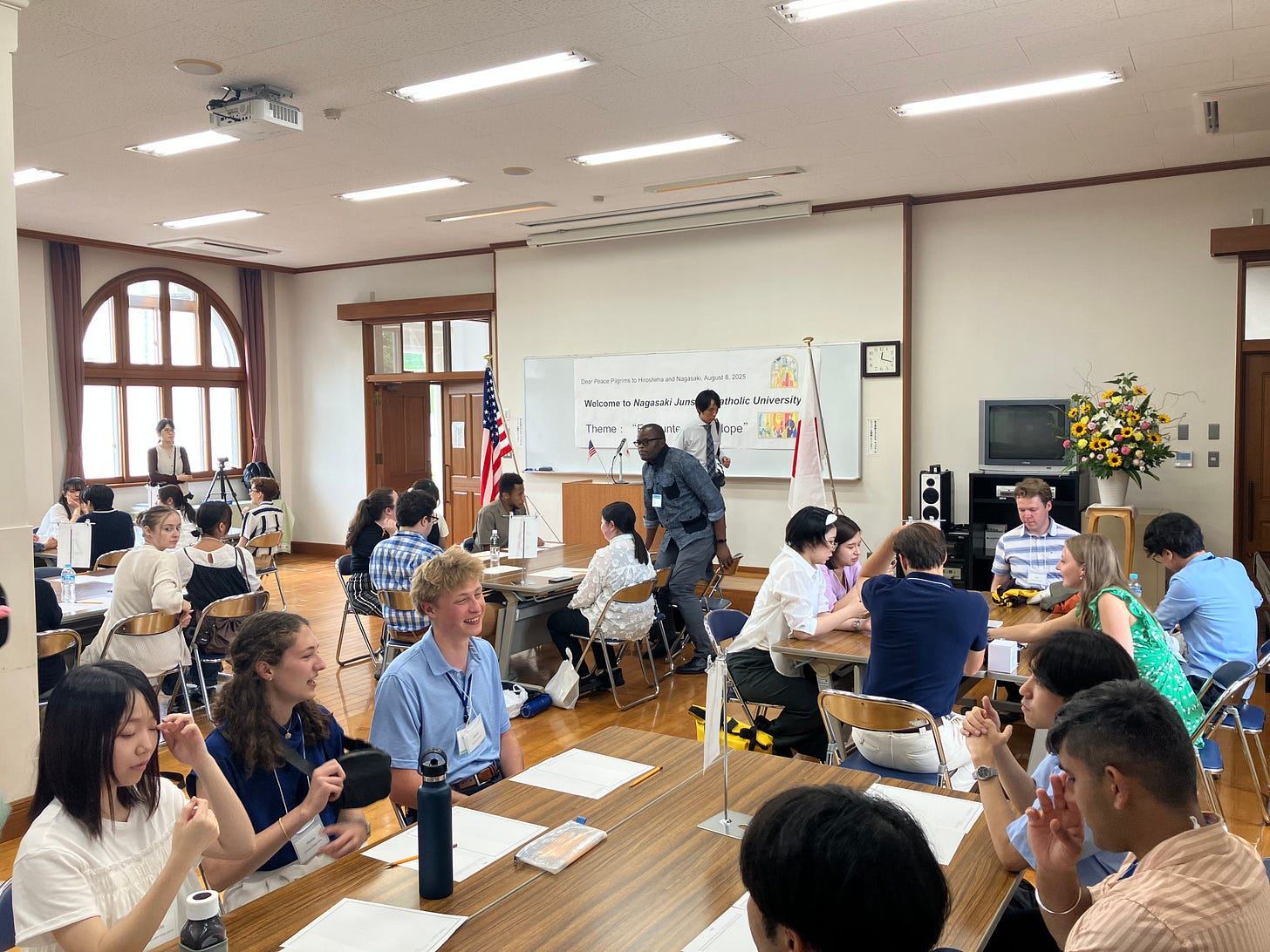At the beginning of August, I had the unique opportunity to join a Catholic peace delegation to Hiroshima and Nagasaki. The delegation was headed up by Cardinal Blase Cupich, Archbishop of Chicago, Cardinal Robert McElroy, Archbishop of Washington DC, Archbishop Paul Etienne of Seattle, and Archbishop John Wester of Santa Fe.
The delegation consisted not only of these church leaders, but also a number of administrators and faculty from a number of Catholic universities from across the United States, including Georgetown, Gonzaga, Catholic University of America, Marquette University, Notre Dame, and Loyola Chicago (where I work). Most importantly, each school that participated was also able to send a number of undergraduate and graduate students. In all, more than 50 participants from America joined the delegation.
These students met with their counterparts from Sophia University in Tokyo and Nagasaki Junshin Catholic University. They ate together, traveled together, did karaoke together, and had a deep exchange of hearts and cultures. Most importantly, these students participated in an all-day synodal event in Nagasaki, a “conversation in the Spirit,” where they reflected both intellectually and spiritually on the experiences they were having together, and the gravity of the effects of the bombings, even eight decades on.

The weight of the circumstances hit me at odd times. As we gathered for the Eucharist at the Hiroshima Commemorative Mass, we sang an anthem called “Peace of Christ.” I suddenly found myself weeping.
Days later, I was walking with my colleague, Peter, on the grounds of the Nagasaki Atomic Bomb Museum. We stopped and contemplated a statue of two children, holding each other aloft in flight, against the sky.
But of course, these children aren’t flying; they are dying. And I am standing there, and the sculpture is beautiful, and the weight of it hits me, and now I am weeping again.
In the Nagasaki Atomic Bomb Museum, there is a room that you can visit that is filled with luminescent green towers — towers that remind you of the hue of trinitite, the green glass that was made when desert sand was fused by the heat of the blast of the first-ever nuclear explosion in New Mexico. There in this luminous hall, they have a tower in which they hold books which contain the names of all the dead. Each name gathered over the past eighty years. All are remembered. None are forgotten.
We were told that, when you stand in the hall and look through the skylight window in the ceiling, you are looking at that part of the sky where the bomb exploded, all those years ago.
What am I taking away from this time in Japan? Many things. Primarily, I am convinced that the third act of my life, the remaining years I have, will need to be wrapped up in working for peace. I did this in my twenties, but over the past few decades, I have fallen away. Now I want to get back to it, to do some good for a bit before I go.
Also, I am imagining what it might be like to return for another anniversary. The 90th, or maybe even the centenary. It would be an honor to go back, and to remember, and to continue to atone for what we, we Americans, did there with our science and our hate.
The final thought, and my final heartbreak from the trip, was meeting and interacting with the Hibakusha, the living victims of the bombings. Those who are still with us are themselves now in their 80s and 90s. Their numbers are dwindling. And as they pass from this world, the risk is that the memory they hold will also pass away from us. We must not allow that to happen. We must find ways to remember the horror that happened there, halfway around the world from where I am sitting comfortably now, so that it will never, never, never happen again.







